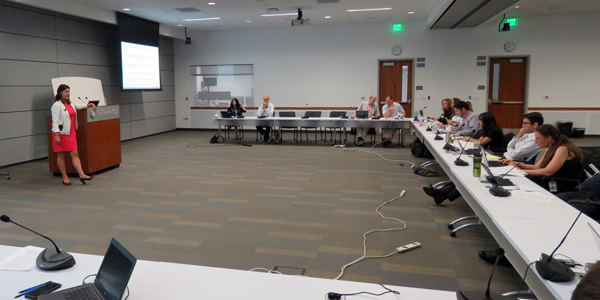By Jason Fordney
CAISO’s Department of Market Monitoring criticized a recently proposed set of market rule changes as incomplete, urging a slower approach.
The department and other market participants recently submitted comments on CAISO’s straw proposal for its Commitment Cost and Default Energy Bid Enhancements (CCDEBE) initiative. The proposal is designed to more accurately reflect unit commitment costs and overhaul the way the ISO calculates the default energy bid (DEB), which replaces bids of units found to have market power. (See CAISO Developing New Bidding Rules.)
The Monitor said it continues to recommend that CAISO split the proposal into parts and that more time is needed to develop dynamic mitigation. “The development and implementation of dynamic mitigation of commitments costs is relatively complex and the ISO has made very limited progress on developing technical details of an approach for actually implementing this,” it said.
“Given the flaws and lack of detail in the ISO’s commitment cost mitigation design,” the Monitor does not support a proposal to raise the caps on market-based commitment cost bids above the current level of 125%.
One of CAISO’s rationale for the new program is incentivizing flexible resources. The grid operator says that overly constrained supply offers discourage participation by some resources in the ISO and the Western Energy Imbalance Market (EIM), where the changes would also apply.
There are three power suppliers subject to the DEB: Arizona Public Service and Berkshire Hathaway’s PacifiCorp and NV Energy. In comments filed Aug. 15, NVE said it supports increasing the flexibility of supply bids and reforming the DEB methodology “to ensure appropriate recovery of actual supply costs.”
The Western Power Trading Forum said it supports the concept of the revised proposal but asked for additional information on the frequency of mitigation. The group supports CAISO’s proposed hourly minimum load offers, market-based commitment costs subject to mitigation and improved estimates of commitment costs. It also offered suggestions on details of the market design.
Pacific Gas and Electric said it supports part of the proposal but wanted additional detail before it would endorse the changes. “PG&E continues to have concerns about committing to move forward with a dynamic mitigation design while many questions remain regarding design details, feasibility and cost,” the company said. It said that more analysis is needed and that the dynamic mitigation should be split off from the rest of the CCDEBE proposal.
CAISO has acknowledged that its time schedule has been rapid since the original straw proposal was issued on June 30, but it says it is aiming for approval at the Nov. 1 Board of Governors meeting. The ISO said that some parties are anxious to have the new rules approved.
After originally setting an Aug. 10 deadline for comments — only eight days after the revised straw proposal was posted — CAISO extended the comment period to Aug. 15.
The ISO has made several changes to the package based on stakeholder input. The initiative has other market adjustments, including alterations to the use of gas indices and rules to allow cost-based energy offers above $1,000/MWh, in compliance with FERC’s November 2016 Order 831.
Some stakeholders thought the EIM Governing Body should sign off on the changes, but CAISO declined, saying it would offer only an advisory vote to the body since the initiative applies across all CAISO markets.




